DENMARK & NORWAY: ROYALLY RICH IN BREATHTAKING BEAUTY, FROM CASTLES TO FJORDS
PART 3: STEPPING INTO THE FAIRY TALE WORLD THAT IS NORWAY–GOAT FARMS, SKI RESORTS, FJORDS AND WHITE-KNUCKLE MOUNTAIN ROADS
In PART 2: DANISH ROYALTY– FROM THE QUEEN’S RESIDENCE TO HAMLET’S CASTLE TO KAREN BLIXEN’S SANCTUARY, reminders of Denmark’s history thrive today in castles, heroic citizens and the Arts.
We stepped onto the Pearl Seaways, an 1800-passenger cruise liner that masquerades as a ferry, in Copenhagen, Denmark and stepped off in Oslo, Norway. If our Odysseys Unlimited tour group of 24 had been awake during the overnight journey, we’d have seen some of the islands and landmarks along Norway’s 1,100-mile coastline.
Over the next 10 days Tour Director Karin Hansen led us by bus on hairpin mountain roads to gaze at spectacular waterfalls, ferry across icy glacial-blue fjords, ride a train until we stopped to watch the troll’s daughter dance, and taste some of Norway’s freshest goat cheese, fruits, salmon served more ways than I could tally, and nibble cautiously on traditional sausages made of whale or reindeer meat.
We explored the homes of writers, such as Karen Dinesen Blixen, heard the music of Edvard Grieg in his preserved living room, and peered at Kon-Tiki, the wooden boat in which Thor Heyerdahl crossed the Pacific Ocean. In those 10 days, we gawked at Norway’s famed scenic natural beauty and were awed by the evolution of the country’s metropolises.
Welcome as I take you on our journey into Norway, a land of legendary splendor.
Lillehammer and Gaala
Where we stayed:
Wadahl Hotel is a 100-room ski lodge hotel in the mountain village of Gaala. We fortunately had a back porch on our room, with table and chairs. We sipped wine and toasted our good fortune for the serene river, lush green trees that faded into rolling hills and faraway mountains. Below us, cows grazed near thatch-roofed houses.
What we saw:
I don’t ski, but even I knew the name Lillehammer from hosting the XVII Olympic Winter Games in 1994. Lillehammer is a village so small that during the Olympics, guests would have to take a train from Oslo, two hours away, in order to find lodging. But before we visited the famous ski jumps in the northernmost city in the world to host an Olympics, we stopped in for an all-too-short guided tour of some of the 200-original historic buildings that comprise Maihaugen, one of Northern Europe’s largest open-air museums.
Much like Colonial Williamsburg in Virginia, Maihaugen is a recreation of how a community once lived their daily lives. The 200 buildings each represent a facet of farm life: where people lived, worshipped, or where they churned butter and cheese. Not all of Maihaugen’s buildings were originally located in Lillehammer. In fact, many were transported to Maihaugen to preserve the history of farming communities. There are guided tours and theater performances. Costumed characters offer artisan demonstrations. We saw a goat herder and a gypsy hauling her cart of wares behind her over the rocky terrain. We were told gypsies served a useful service to the community. They moved from farm to farm every few days. The farmers would feed them and in exchange, the gypsies spread the news (and gossip).
Our group didn’t get to visit the dental clinic that contains a treatment room and laboratory as it was used by Anders Sandvig, the dentist who founded Maihaugen in the late 1800s. We did visit the community’s original house, built in 1877. Here we learned where the word “window” originated. A few rounded holes were carved into the log cabin’s walls to allow for ventilation. The plugs for those holes were reinserted in case of strong winds or intemperate weather. That became known as wind-Os. Another aspect of the farm residences was an extended dining table, both for the family and for workers or guests. Women sat on one side and men the other.
The second home actually built in the community wasn’t until 100 years later. The only other residence we walked into belonged to a parson. Relocated to Maihaugen, it was built in 1699. Our guide said it was the only house in the community with imported furniture. Paintings, not tapestries, covered the walls. The Parson’s wife was typically the farm’s doctor.
Where we ate:
We stopped for lunch at a local Norwegian restaurant. Though it had more of a cafeteria menu, our lunch was prix -fixe. I had poached salmon with dill, potatoes blanketed with a thick white gravy, frozen veggies (yuck), and cucumber salad. The cucumbers were paper thin, accomplished by a cheese slicer that is particular to Norway, and which we were told was originally created by a carpenter from Lillehammer. Russ had a local version of pork meatballs, gravy and warm sauerkraut.
GEIRANGER
Where we stayed:
Hotel Union is a UNESCO World Heritage site built originally in 1891 and then rebuilt in 1979. The 197-room hotel, a fourth-generation family-run enterprise, includes a collection of vintage cars. Getting to the hotel required a lot of deep breathing and trust that our calm, experienced Norwegian driver, Vidar, would safely navigate the 20 hairpin turns and bridges to the summit of Mount Dalsnibba, a bird’s eye view at 4,900 feet of Geirangerfjord, and to our pristine hotel at the foot of the mountains. The weather was unexpectedly clear and the views of Geirangerfjord, a UNESCO site that is one of Norway’s most dramatic fjords, were startling. The fjord is 10 miles long, 960 feet deep, and lined with sheer rock walls.
We stayed at Hotel Union for two nights, taking day trips to gape at some of Norway’s legendary scenery. But without Karl Mjelva and his wife Julie buying a small hotel in 1899 and re-naming it the easily-pronounceable Hotel Union, the road still used today that had been hand-dug into the mountain might never have needed cars for tourists; and therefore, there would have been no vintage car collection to impact the area’s history. Here’s a story that surprisingly, hasn’t been yet made into a movie.
In 1869, the first cruise ship landed in Geiranger. Coastal ports were soon the docking points for more ships bearing tourists, who needed places to stay. In 1889, a narrow slice of road dug into the mountain was completed, linking tourists from Geiranger to Grotli. The road is pretty much the same today except for one curve that’s been smoothed out. (Think this through. Small cars on a small road then. Today thousands visit in large touring buses on the same road!). Mjelva bought an Opel car around 1910. Impressed with its handling, he partnered with Opel to make small cars with better engines to take the curves on the road. Those cars, designed to carry seven to nine passengers, all bore a metal plaque identifying it came from Geiranger and the year produced. Local farmers realized the value of tourist dollars. They united and also brought in cars, hiring drivers in the 1920s and 1930s to chauffeur tourists.

War II, the Germans invade and claim possession of the cars. Locals stole them back in 1944. As the economy improved, the farmers wanted newer cars, so sold the old ones. Mjelva set about buying back all the Geirganger-identified cars he could find. Many he personally restored. So far he has eight in perfect running condition and is working on a ninth, even though he is in his 90s. All the immaculately-refurbished cars run and can be rented.
Today, a fifth generation of the Mjelva family runs the hotel. Julie Mjelva’s dream had been to begin a school. That dream is now a hotel management school within a university.
What we saw:
We stopped in Lom, a municipality in Oppland county, to visit the second largest and second oldest stave church in the world. Staves are pillars that hold up the foundation. Sap was first removed from pine trees, then the trees were left to harden before being cut down and used for construction. Many of the 26 stave churches remaining in Norway are at least 850 years old. In 1030, Norway officially became Christian. In 1537, when the official religion changed from Catholic to Lutheran, services went from 15-20 minutes of standing to two-and-a-half hours of sermons that necessitated building benches for congregants.
The Lom stave church was originally constructed in 1158. Superstitions ruled the minds of the day. Dragon heads were painted on the roof to fight off wild spirits. Women sat on the north side of the church, with men on the south. They thought that evil spirits blew in from the north and would penetrate the women… so men would be safe. (You can’t see my face, but I am refraining my tightly-sealed mouth from making a smart aleck remark!)
Nearly 5,000 feet up, the views from Dals Nibba (Peak of the Valley) are well-worth the white-knuckled journey hugging hairpins that it took to get there. Our guide, Karin, offered us a shot of Aquavit (or Akvavit) to toast our safe arrival and that the day afforded us rare clear views. Aquavit is a Scandinavian spirit produced since the 15th century. Its distinctive flavors are usually spices, such as dill, fennel, cardamom, or caraway and contains 42-45% alcohol.
Where we ate:
What is important to know about the Grotli Hotel Restaurant is not the so-so food or slow service. It’s because Grotli was the location of a true World War II incident that became a movie in 2012. Into The White was filmed on location. Briefly, a group of British and German soldiers find themselves stranded in the wilderness after an aircraft battle downed their planes. Unknowingly, they find shelter in the same cabin. Quickly realizing the only way to survive the winter was to declare a truce. I didn’t see the movie, but one name on the movie poster in the restaurant stuck out: Rupert Grint, who played Ron Weasley in the Harry Potter movie series.
Another day, we visited HerdalenSerter, a goat farm that once was the summer farm. Now, goats are herded or trucked uphill from lower-mountain winter farms. We learned that most farms didn’t have access to fresh milk until computerized milking stations came about. This farm area has been used for the last 300 years by 15 farmers, and now is a co-op of six. Norwegian teens don’t like the hard work, so farmers share land, woods and lakes and hire summer workers who are mostly from Eastern European countries. They appreciate earning more in the summer than they could in a year in their own country.
At the goat farm, we sampled the famous brown cheese of Norway. Whey is the main ingredient. The cheese is separated from curds. Fresh milk is added and brought to a boil until it thickens. The lactose caramelizes, leaving it a latte color while tasting like a sweet cream cheese. The cheese is worked until smooth and then placed in a mold overnight. Doesn’t need refrigeration after that. Brown cheese is typically sliced very thin and is a must on Norwegian breakfast tables.
Before heading out to see a working goat farm in action, we were served a typical Norwegian lunch in the family’s main building, in a room able to hold at least 40 comfortably. Our appetizer was Lefse, a wrapper made with or without potatoes into bread, which is then rolled out. Ours was stuffed with cream cheese, smoked salmon, and dill. I really enjoyed the hearty bowl of veggie soup that contained farm-grown vegetables, pearled barley, and little nibblets of goat and red reindeer meat. Dessert was an almond cake, composed of little Tootsie-roll shaped pieces stacked together in tiers to resemble a wedding cake. The cake is usually only for special occasions.
BERGEN
You how it takes a village to raise a child? Well, it took several ferry rides past the famous Seven Sisters waterfalls, a cruise on Hornindalsvatnet Lake– the deepest lake in Norway– a bus and a long day of travel to get us to Bergen. The first of the ferries took us on the Geirangerfjord, the most famous fjord in Norway, to Hellesylt. Bergen is Norway’s second largest city, with a population of about 275,000… and wine stores!
Where we stayed:
Radisson Blu Royal Hotel, located in the city center of Bergen near the historic wharf area, made walking about easy.
What we saw:
Bergen is surrounded by seven mountains. Within a few minutes of our hotel, we could walk to the Fish Market, where hundreds of vendors offer onsite cooking of fish, shrimp and lobsters, or we could sample fresh, plump fruits, homemade jams, cheeses, and whale or reindeer dried sausages.
Buildings in Bergen are colorful and so close together that fires have destroyed them many times. They are rebuilt time and again to duplicate their 12th century appearance, one of the reasons Bergen is now a World Heritage city. The colorful buildings are where Hanseatic merchants sold from in the 14th and 15th centuries. You can take the Floyfjell Fenicular up the mountain to overlook the city, explore museums, or just browse souvenir shops selling the ubiquitous trolls.
I haven’t mentioned trolls yet, but they are truly everywhere. Trolls are iconic symbols and as well-merchandised as any American theme park could do. According to Norwegian fairy tales, trolls lived under bridges and in mountains. A troll’s nose is allegedly as long as a rake handle, though the souvenirs stop short of that.
Legend also has it that 350 witches were “judicially murdered” in Bergen. There’s a plaque testifying to the need for their deaths.
Because Bergen is a large city, we can finally visit a wine shop and stock up. Wine is taxed 80% but even with that, we find some reasonable prices. Fish, fruits and gamey meat sausages aren’t all you’ll find in Bergen. Ice cream and gelato kiosks are everywhere, especially in Bryggen, the local harbor area. We spot cars with EL on the license tag. That means they’re electric cars and receive free tolls and other services.
We enjoyed visiting Troldhaugen, the home of Pianist/Composer Edvard Grieg and his wife, Nina, who had been a renowned soprano. We walked through their home, toured the museum, and were lucky to hear Dmitri, an excellent violinist, play Grieg’s “The Last Spring” in the Memory Room of the house. We didn’t have time, but the onsite Grieg Hall, holds concerts. The Bergen Philharmonic Orchestra is based in the 250-year-old facility. There are lunchtime concerts daily at 1 pm from May through September 30 for a nominal fee.
www.wadahl.no
www.maihaugen.no
www.hotel-union.nor
www.grotli.no
www.radissonblu.com
info@troldhaugen.com
PART 4: THE TROLL’S DAUGHTER DANCES, WATERFALLS PLUNGE, AND THERE’S SALMON… LOTS AND LOTS OF SALMON!
Photos by Russ Wagner (except for any photos of us)
Karen Kuzsel is a writer-editor based in the Orlando area who specializes in the hospitality, entertainment, meetings & events industries. She is an active member of ILEA and MPI and is now serving on the 2016 – 2017 MPI Global Advisory Board for The Meeting Professional Magazine for the second consecutive year. She is a member of the Society of Professional Journalists. Karen writes about food & wine, spas, destinations, venues, meetings & events. A career journalist, she has owned magazines, written for newspapers, trade publications, radio and TV. As her alter-ego, Natasha, The Psychic Lady, she is a featured entertainer for corporate and social events. karenkuzsel@earthlink.net; www.ThePsychicLady.com; @karenkuzsel; @thepsychiclady.


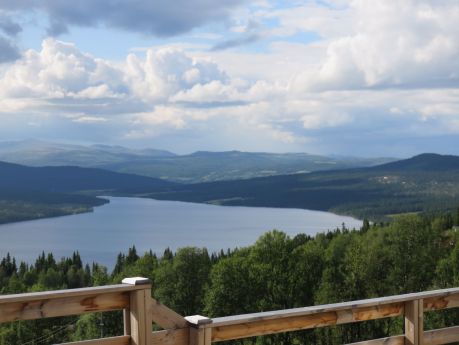







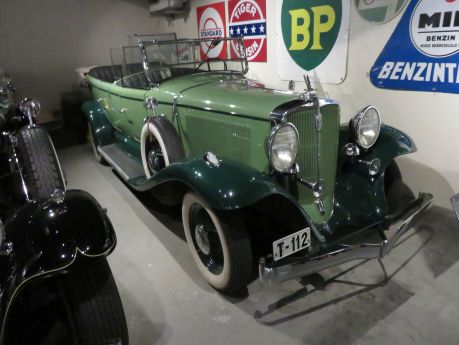

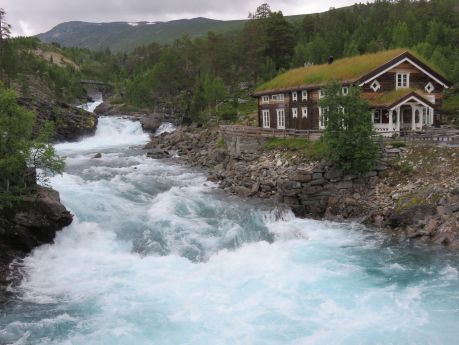
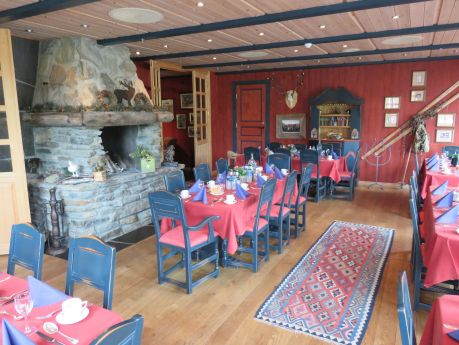
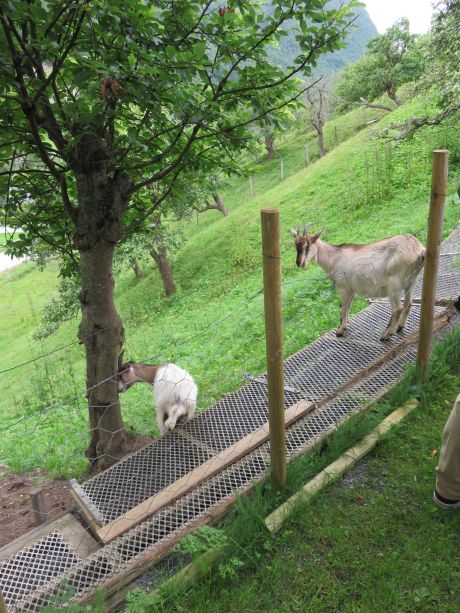

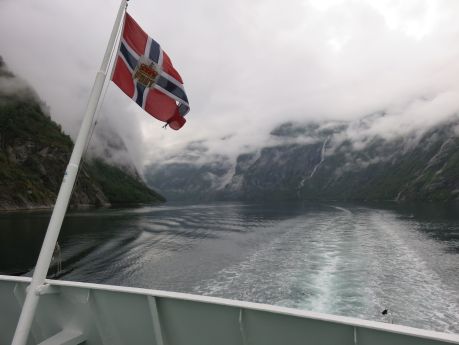





Leave a Reply
Want to join the discussion?Feel free to contribute!